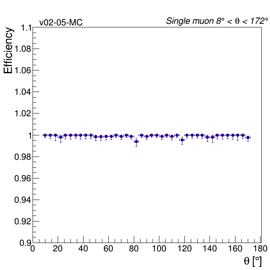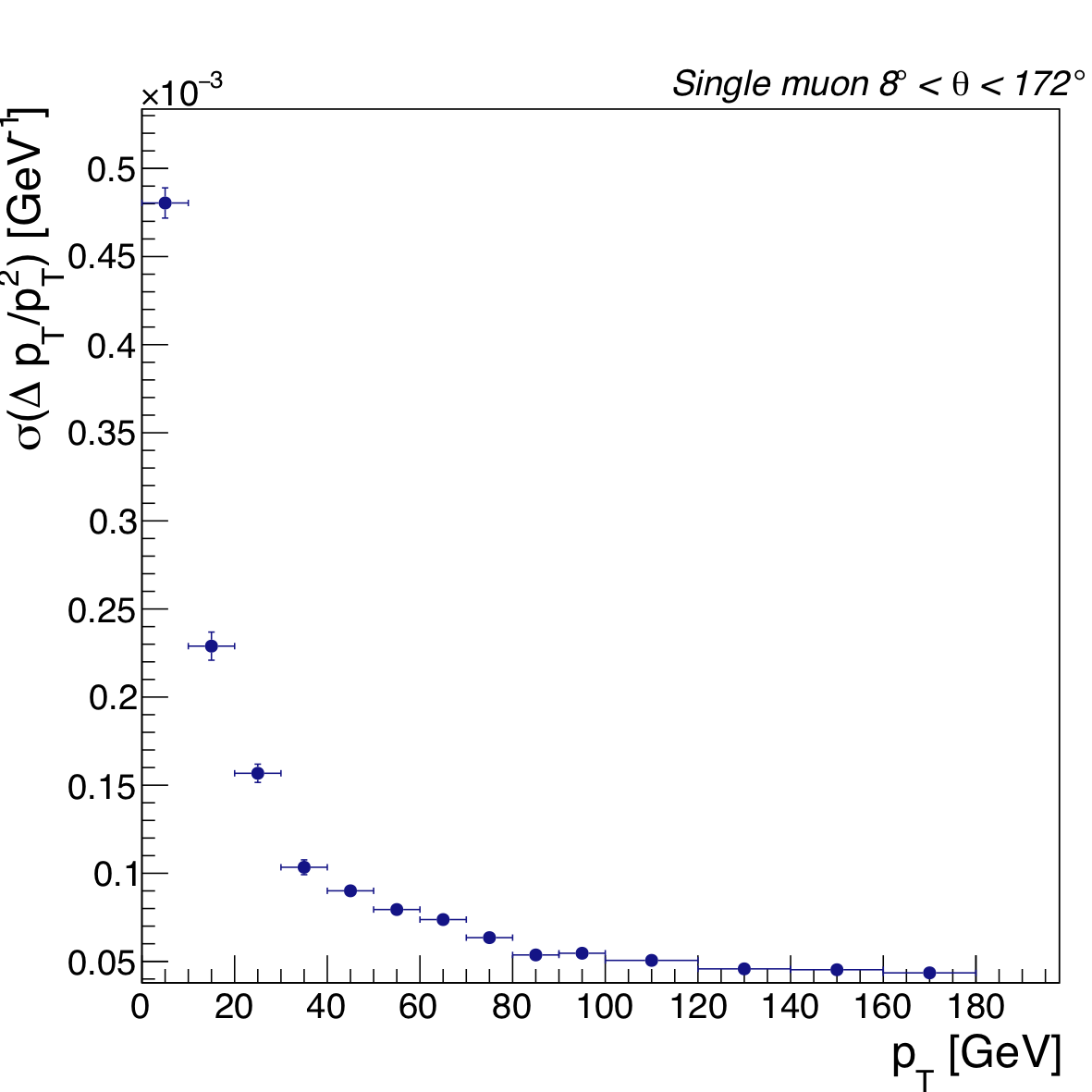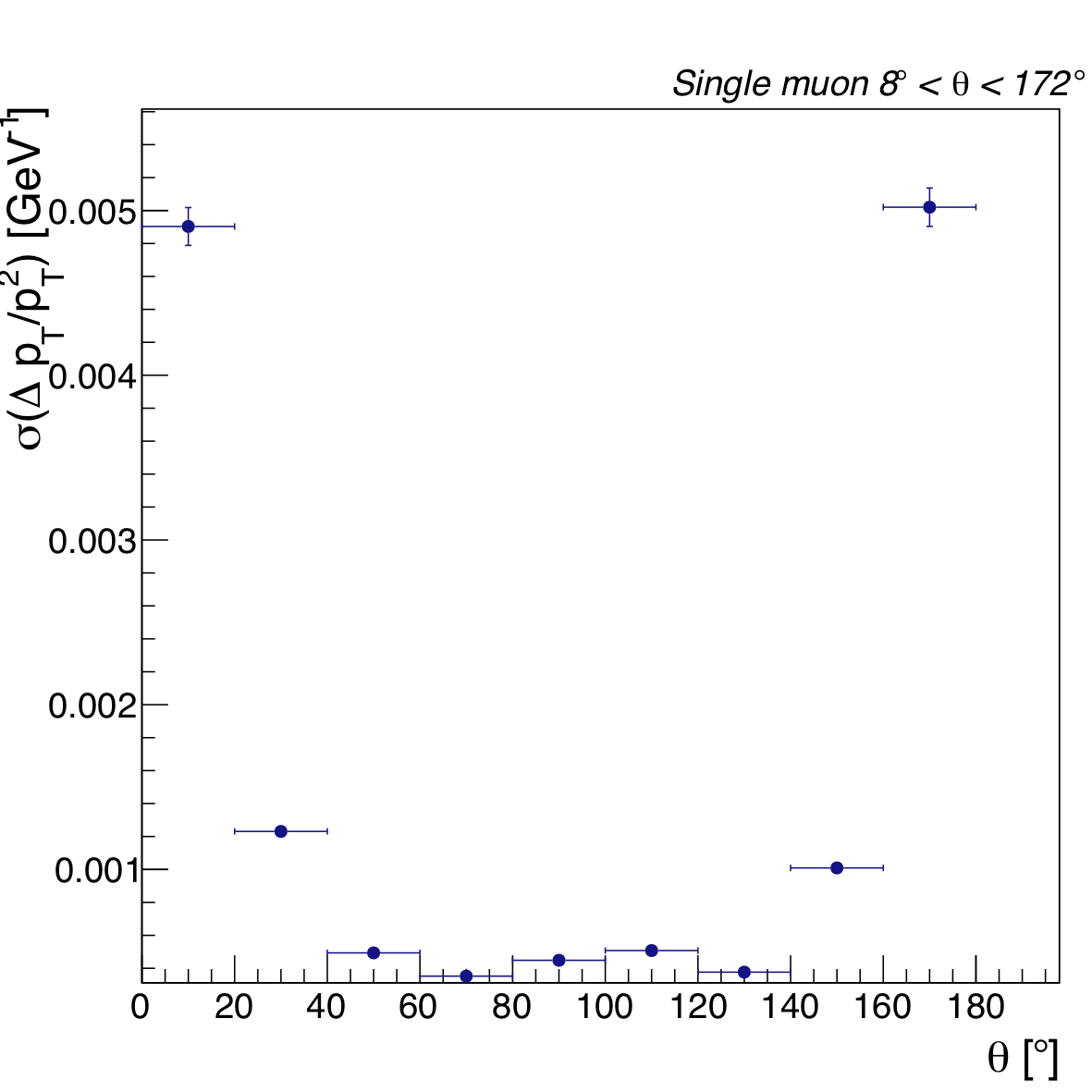Overview of the muon system¶
The muon system instruments the iron yoke plates with layers of track sensitive chambers.
- Technology implemented: Glass Resistive Plate Chamber
- Solenoid central field: 3.57 T
- Magnetic field in the barrel region: -1.34 T
- Magnetic field in the endcap region: 0.01 T
| radius (mm) | |z| (mm) | #layers | sensor area (mm2) | cell size (mm2) | #channels (106) | |
|---|---|---|---|---|---|---|
| Barrel | 4461 < r < 6450 | < 4179 | 7 | 1942 | 30 x 30 | 2.2 |
| Endcap | 446 < r < 6450 | 4179 < |z| < 5700 | 6 | 1547 | 30 x 30 | 1.7 |
Beam-Induced Background¶
 BIB muon hit spatial distribution in the first layer of the muon system endcap
BIB muon hit spatial distribution in the first layer of the muon system endcap
 Number of hits per bunch crossing in each layer of the muon system
Number of hits per bunch crossing in each layer of the muon system
Particle flux for rate calculation¶
BIB particles flux [Hz/cm2] in different regions (bunch crossing time 10 μs):
| Particle | Endcap ( Θ > 12° ) | Endcap ( 0 < Θ < 12° ) | Endcap ( Θ < 0° ) | Barrel |
|---|---|---|---|---|
| neutrons | 1.2·103 | 5·104 | 1.2·106 | 1.4·102 |
| protons | 16 | 3·102 | 2.4·104 | -- |
| photons | 6.2·102 | 104 | 7.2·105 | 5 |
| e+ e- | 3 | 3.3·102 | 5·103 | < 1 |
| μ+ μ- | 3 | 3.7·102 | 1.2·104 | -- |
| pions, kaons | < 1 | 70 | 103 | -- |
| Total | ≈ 2 kHz/cm2 | ≈ 60 kHz/cm2 | ≈ 2 MHz/cm2 | ≈ 200 Hz/cm2 |
Muon reconstruction efficiency with Pandora algorithm¶
The single muon efficiency is defined as the ratio between the generated particles associated with a cluster and the total generated clusters.



